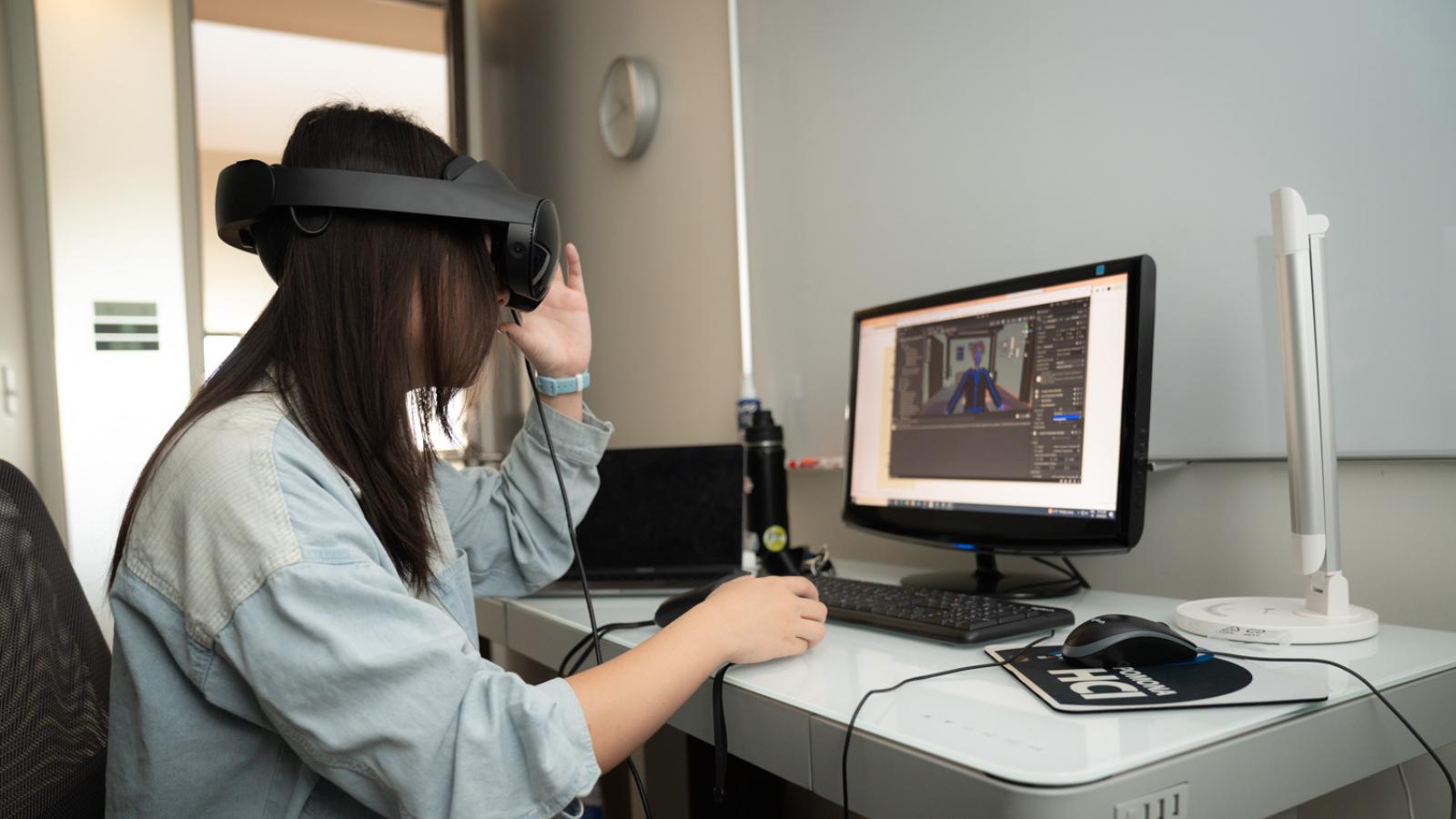This summer, 139 Pomona College students delved into research through the Summer Undergraduate Research Program, more familiarly known as SURP.
For some of them, it was an opportunity to dip their toes into full-time research and explore it as a future career option. For all of them, it was a chance to stimulate their thinking and growth over the summer.
SURP provides funding for projects that are four to eight weeks in length. Projects come in two forms: research assistantships, which are designed by and under the direction of a Pomona faculty member, and student-designed projects, which are conducted under the mentorship of a faculty member.
In September, each SURP participant will present a report or product that encapsulates their project at a symposium on campus. Get a preview of four of their projects now.
Applying Eye-tracking Software to Simple Virtual Reality Environments to Increase User Immersion
Ella Zhu ’26, a cognitive science major hoping to double major in computer science or mathematics, conducted an independent research project under the mentorship of Alexandra Papoutsaki, associate professor of computer science.
Papoutsaki is an expert in human-computer interaction and eye tracking, which appealed to Zhu’s interest in the intersection of cognitive science and computer science. Papoutsaki suggested an independent project and helped Zhu craft a proposal.
For her project, Zhu sought to build a virtual reality (VR) environment using Unity software (which she first had to learn) and applying eye-tracking to it.
“There’s a lot of research that says that eye-tracking really improves the immersiveness of the VR environment,” says Zhu. “For instance, if the avatar you’re talking to has a lot of eye animation, you’re more likely to nod and smile, and it makes the interaction a lot more natural.”
The goal for Zhu by the end of the summer was to build a VR environment complete with animated avatars.
“Fingers crossed!” she says, before heading to the computer lab for the day.
Effects of Chronic Stress on Depression, Learning and Memory
Eleni Katafygiotou ’25 and Ella Moriarty ’25, both neuroscience majors, worked with Assistant Professor of Neuroscience Jonathan King, looking at how mild stress can impact the strength between neurons and the ability to form neural connections, with sex differences as part of the study.
Their hands-on research involved using rats as their main models. Katafygiotou and Moriarty were responsible for both caring for the rats as well as collecting electrophysiological data on them.
Katafygiotou says that finding the synapse could be a challenge, but “it’s very rewarding once you get the signal,” says Moriarty. They would then head upstairs in the Seaver South building to a different lab to analyze the data. The hope is that what they learn can be applied to psychiatry and medicine in the future.
“It has been an amazing opportunity to be able to learn these techniques,” says Moriarty. “It’s insane that as undergraduates, we’re able to do things like electrophysiology.”
Investigating the Genetic Diversity of Milkweeds and its Correlation to the Monarch Butterflies’ Population Decline
Bernice Sule ’26, who is considering majoring in biology, chemistry or neuroscience, conducted research with Jon Moore, associate professor of biology. They looked at milkweeds in two local sites to determine the level of genetic diversity that is present.
“If we ascertain that the genetic diversity is low, then it’s a possible explanation for why the monarch butterfly population is also declining,” says Sule.
Sule worked first on extracting DNA from leaf samples. Once extracted, she had to make sure there was DNA that could be sequenced, through two processes called polymerase chain reaction (PCR) and gel electrophoresis.
She then sequenced the DNA to determine if they were working with homozygous plants or heterozygous ones. A possible outcome of their research is someone else building on it to restore diversity to the specific plants, she says.
This experience gave her a “taste of what research is,” she says. “I didn’t think I would do research in my first year because I was unqualified for most things,” says Sule. “So I’m very blessed.”
Sustainable Energy Transition in California
Cooper Crane ’24 transferred to Pomona a year ago with plans to major in anthropology and was “ecstatic” to be conducting research this summer on a topic they are passionate about.
When Crane heard their advisor Joanne Nucho, associate professor of anthropology, was writing a book on California’s commitment to renewable energy transition, they were eager to help her conduct research for the book.
Nucho and Crane, along with Thalia Fourli ’24, looked at the challenges created by California Senate Bills 350 and 100 and the goal of bringing California to 100 percent renewable energy by 2045. They conducted policy analysis, seeking to answer questions such as whether the project is technically feasible, what potential social challenges there will be and why the changes are necessary.
“It’s been a process that I’m very thankful for because it’s given me a lot of insight into decision-making processes that are happening at the state,” says Crane.
Crane hopes that the research for Nucho’s book will help inform leaders in California how to best implement changes that are “desperately needed.”
